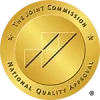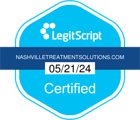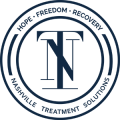Narcan is a potentially life-saving medication that can be purchased and used without a prescription or other medical oversight. To be sure you’re able to use it effectively, though, it’s important to get the answers to a few key questions, such as: How does it work, how can I tell if someone needs it, and how long does Narcan last?
What Is Narcan?
Narcan is the brand name of a medication that can reverse the effects of an opioid overdose if administered in a timely manner. The generic term for the active ingredient in Narcan is naloxone.
Naloxone was first approved by the U.S. Food and Drug Administration (FDA) in 1971. In its original form, it was administered via intravenous or intramuscular injection.
Narcan, which resulted from research that was funded by the National Institute on Drug Abuse (NIDA), is a nasal spray. Each prefilled container of Narcan nasal spray contains 4 milligrams of naloxone.
- In 2015, the FDA approved Narcan nasal spray as a prescription medication.
- In March 2023, after reviewing data that documented Narcan’s safety and effectiveness, the FDA granted approval for it to be sold as an over-the-counter (OTC) medication.
- In Canada, Narcan has been available on an OTC basis since 2016.
Narcan’s status as an OTC medication means that anyone in the United States or Canada can legally purchase, possess, and administer it.
How Does Narcan Work?
Naloxone is an opioid antagonist. This means that when a person is given Narcan, the medication attaches to the same receptors in the central nervous system that opioids do. Once Narcan attaches to these receptors, it blocks the effects of whatever opioids a person has already taken.
To give someone Narcan:
- First, position them so that they are lying on their back.
- Tilt their head back.
- Insert the prefilled device into one of their nostrils.
- Press down on the plunger.
If the person does not respond within two to three minutes, you should give them another dose of Narcan. (Note: This will require another Narcan nasal spray device. Each prefilled device is for single use only.)
Also, either before or immediately after giving someone Narcan, you should call 911 or otherwise summon an emergency first responder.
Anyone who has overdosed on any opioid should be evaluated by a trained medical professional. As we will discuss in the next section, (How Long Does Narcan Last?), one of the many important reasons for summoning professional help is that the effects of the medication will eventually wear off, which can put the recipient’s health back in jeopardy.
How Long Does Narcan Last?
When a person who has overdosed on an opioid receives Narcan, their reaction can be sudden and dramatic. One moment, they are unconscious and unresponsive. The next moment, they have suddenly awakened and can communicate.
This rapid turnaround doesn’t mean that the person is out of the proverbial woods.
Narcan is a temporary solution. Even after receiving the medication and reacting positively, a person may still be in danger of considerable harm, and even death. When you know how long does Narcan last, you can be sure the individual gets the help they need in time.
A dose of Narcan typically lasts 30-90 minutes. As the effectiveness of the dose begins to wear off, the individual may begin to feel the influence of the opioids that led to their overdose.
Depending on how much they took (and how potent the drugs were), the remaining opioids in their system could be enough to trigger another overdose. Even if a person no longer has a lethal amount of opioids in their system, they may still be at risk for other types of drug-related damage.
This is why, as we noted in the previous section, it is so important to call 911 either before giving someone Narcan or immediately after doing so. If you’re not alone with the person who has overdosed, you can get someone to contact an emergency first responder while you are administering the medication.
How Can I Tell if Someone Needs Narcan?
To use Narcan properly, you need to be able to recognize the signs that someone has overdosed on heroin, prescription painkillers, fentanyl, or another opioid. The following are among the most common examples of opioid overdose symptoms:
- Confusion and disorientation
- Constricted or pinpoint pupils
- Extremely slow or shallow breathing
- Slow heart rate and faint pulse
- Vomiting
- Loss of consciousness and inability to be awakened
- Bluish skin coloration, primarily near lips or fingertips
- Cool, clammy skin
If you suspect that someone is in the midst of an opioid overdose, but you’re not sure, most experts advise you to administer Narcan anyway. Though Narcan cannot reverse the effects of non-opioid overdoses, it won’t be harmful to someone who is under the influence of another substance.
Does Narcan Have Dangerous Side Effects?
One of the reasons why Narcan can be purchased and used without a prescription or other medical oversight is that its use has not been linked to a high risk of serious side effects.
Of course, like every other medication, using Narcan is not completely risk-free – but in cases where withholding the medication would likely result in an opioid overdose death, these side effects can seem insignificant.
When Narcan reverses the effects of an opioid overdose, it can throw a person into immediate withdrawal. That, in turn, can cause symptoms such as the following:
- Abdominal cramping
- Nausea
- Vomiting and diarrhea
- Pain in muscles and joints
- Fever and/or chills
- Elevated heart rate and blood pressure
- Tics, tremors, and/or muscle spasms
Find Help for Opioid Addiction in Nashville
Narcan can save a person’s life. But it can’t stop them from continuing to abuse opioids. For that, the individual may need professional help.
Nashville Treatment Solutions is a trusted provider of personalized outpatient care for adults who have become addicted to opioids and other substances. Levels of care at our center include detox, a partial hospitalization program (PHP), an intensive outpatient program (IOP) with both day and evening options, and an outpatient program.
In every program, our patients work in active collaboration with a team of experienced and compassionate professionals. We understand how devastating opioid addiction can be, and we’re here to help our patients find their path toward successful recovery.
To learn more or to schedule an assessment, please visit our Admissions page or call us today.








